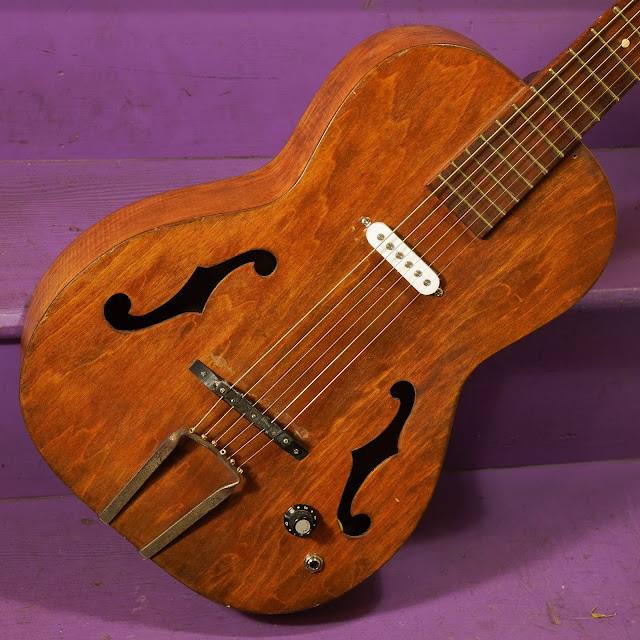1930s Unmarked Rubber Bridge Electrified Flattop F-Hole Parlor Guitar
This guitar was refinished a long time ago so any trace of brand is long-gone. I'm pretty sure it was made in the Oscar Schmidt factory either by Schmidt or by the later-occupiers of the same factory, United. This would have been in the mid-late '30s.
It's a weird one because the whole guitar is plywood throughout the body and it's a flattop design but with two-tonebar bracing (like an archtop), a 12-fret neck joint, and short "parlor" 24" scale length. It handles approximately the same as a tailpiece "parlor" guitar from the same time.
This is part of a trio of rubber-bridge instruments I worked-on for a single buyer -- the other two being a Harmony "Lyra" and a Harmony "Airline" -- and all have the same basic setup and same freebie Strat-style pickups pulled from the same freebie Strat-copy guitar. Check out the other two to hear what these sound like plugged-in (and acoustic).
This guitar's a hair brighter and more forward than the other two but in the same boat, for sure. And it's got f-holes! And it's a flattop! So curious...














Comments
https://reverb.com/item/27145614-1938-harmony-supertone-flat-top-f-holes